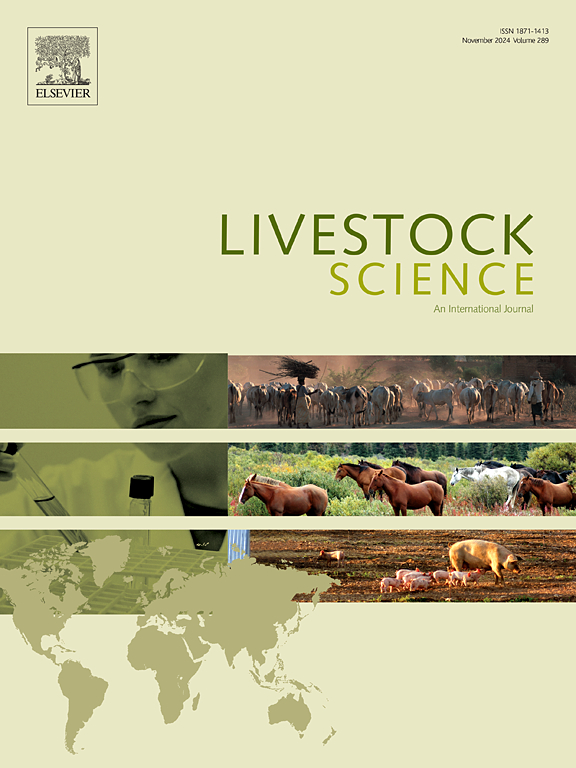Using Bayesian regularized neural networks (BRNN) for predicting DRP of Holstein sires by including different SNP marker effects
IF 1.9
3区 农林科学
Q2 AGRICULTURE, DAIRY & ANIMAL SCIENCE
引用次数: 0
Abstract
Artificial neural networks (ANNs) are computational algorithm in the field of machine learning (ML) prediction methods. The aim of this research, was using two-layers Bayesian Regularized Neural Network (BRNN) by including both additive and dominance effects of SNP markers for prediction of reproductive traits’ de-regressed proofs (DRP) of Holstein sires. The studied reproductive traits were the age at first calving (AFC), calving interval (CI), days open (DO) and daughter pregnancy rate (DPR). The genotypic information related to 2419 sires with 41,099 SNPs. DRP of these sires calculated using an animal model and the Garrick method (DRP_G). The predictive accuracy for the AFC_DRP trait ranged from 0.85 with additive effects to 0.89 when both additive and dominance components were considered. Similarly, the predictive accuracy for CI_DRP trait varied between 0.54 for additive effects and 0.55 when both dominance and additive effects were included. For DO_DRP trait the predictive accuracy ranged from 0.53 with additive effects to 0.55 with the inclusion of both dominance and additive effects. The accuracy for DPR_DRP trait ranged from 0.51 with additive to 0.53 both additive and dominance effect. For all studied traits accuracy of ANN were increased by adding dominance effect of SNP markers.
利用贝叶斯正则化神经网络(BRNN)预测荷斯坦奶牛DRP,包括不同SNP标记效应
人工神经网络(ann)是机器学习(ML)预测领域的一种计算算法。本研究的目的是利用包含SNP标记的加性效应和显性效应的双层贝叶斯正则化神经网络(BRNN)预测荷斯坦奶牛生殖性状的去回归证明(DRP)。研究的生殖性状为初产龄(AFC)、产犊间隔(CI)、开胎天数(DO)和子代妊娠率(DPR)。基因型信息涉及2419个品种,SNPs 41,099个。使用动物模型和Garrick方法计算这些品种的DRP (DRP_G)。加性效应下AFC_DRP性状的预测精度为0.85,加性效应和显性效应均考虑时预测精度为0.89。同样,CI_DRP性状在加性效应下的预测精度为0.54,在显性效应和加性效应下的预测精度为0.55。对于DO_DRP性状,加性效应下的预测准确率为0.53 ~加性效应下的预测准确率为0.55。对DPR_DRP性状加性效应的准确度为0.51 ~加性效应和显性效应的准确度为0.53。在所有研究性状中,通过加入SNP标记的显性效应提高了人工神经网络的准确性。
本文章由计算机程序翻译,如有差异,请以英文原文为准。
求助全文
约1分钟内获得全文
求助全文
来源期刊

Livestock Science
农林科学-奶制品与动物科学
CiteScore
4.30
自引率
5.60%
发文量
237
审稿时长
3 months
期刊介绍:
Livestock Science promotes the sound development of the livestock sector by publishing original, peer-reviewed research and review articles covering all aspects of this broad field. The journal welcomes submissions on the avant-garde areas of animal genetics, breeding, growth, reproduction, nutrition, physiology, and behaviour in addition to genetic resources, welfare, ethics, health, management and production systems. The high-quality content of this journal reflects the truly international nature of this broad area of research.
 求助内容:
求助内容: 应助结果提醒方式:
应助结果提醒方式:


